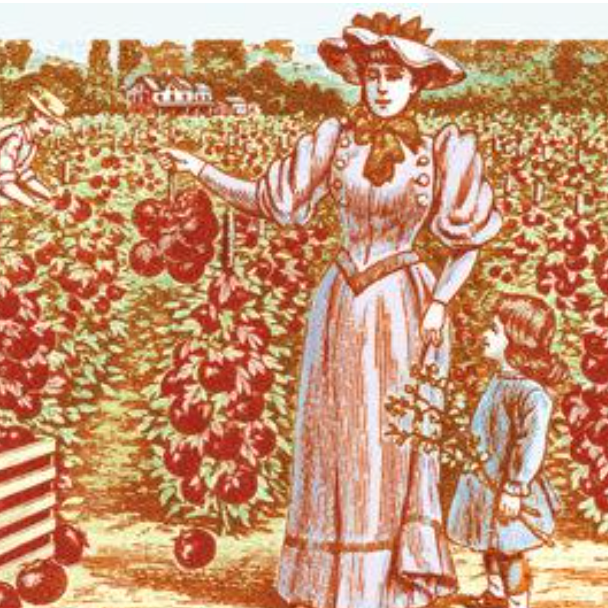
Tomato Trellising Basics
 Vintage image from 1914 Fairview Seed Catalog, Syracuse, NY. Digitally altered by Sarah Snow/ Treeodesign.
Vintage image from 1914 Fairview Seed Catalog, Syracuse, NY. Digitally altered by Sarah Snow/ Treeodesign.Google 'trellising tomatoes,' and you'll quickly be immersed into an entire world you didn't know existed. You'll find finicky, particular pruners twisting their tomato vines around vertical strings supported by 6-foot high beams. You'll find devil-may-care gardeners who let their tomatoes sprawl right on the ground. And, in between these two extremes, you'll find hundreds of shades of tomato caretaking; there are nearly as many methods to grow tomatoes as there are heirloom tomatoes to grow!
An entire book could be written on the various methods, but here are the most common:
1.) Pruned vines tied to vertical supports. This is probably the most common approach. Vines are pruned as they grow--the shoots that develop in the crotches between the "trunk" and the lateral leaves are removed--and the trunk is tied to a nearby parallel stake as it grows. Works like a charm, allows for closer plant spacing and good yields, but does require regular attention to tying up.
2.) Tomato cages. Another common approach. No pruning required. Just place a tomato cage around your plants and let them grow however they'd like. Usually the cage will provide all necessary support passively, but do keep an eye out for toppling plants when young. A single loop of twine may be all you need to provide before letting the cage take over. Space your tomato plants widely if you use this method: indeterminate varieties can grow enormous when left unpruned.
3.) "The Florida Weave." (Photos below.) Stakes are placed in the row between every second plant, then twine is run down each side, looped around each stake to secure it, and tied off at the ends. The twine is run about a foot apart as the vines grow. Quick and efficient for large numbers of plants. Most commonly, 1/2" EMT electrical conduit is used as stakes. Stakes at ends of row need support: we suggest using 6- or 8-ft T-posts.
You'll notice I didn't mention the let-your-tomatoes-sprawl-all-over-the-ground method. Why not? This method is very risky in our wet climate. Not only are the ripening fruit more likely to suffer damage from small critters of all sorts when grown on the ground, they also stay cooler down low--and in a cool summer, this means a greater likelihood of disease and a reduced yield.
The important thing is to get your tomatoes elevated and to keep the bracts of tomatoes supported enough that they don't topple your support structure as they grow and mature. Any method of accomplishing this is great--as long as it works well for you.








